Massage Therapy Business Tips
November 25, 2025
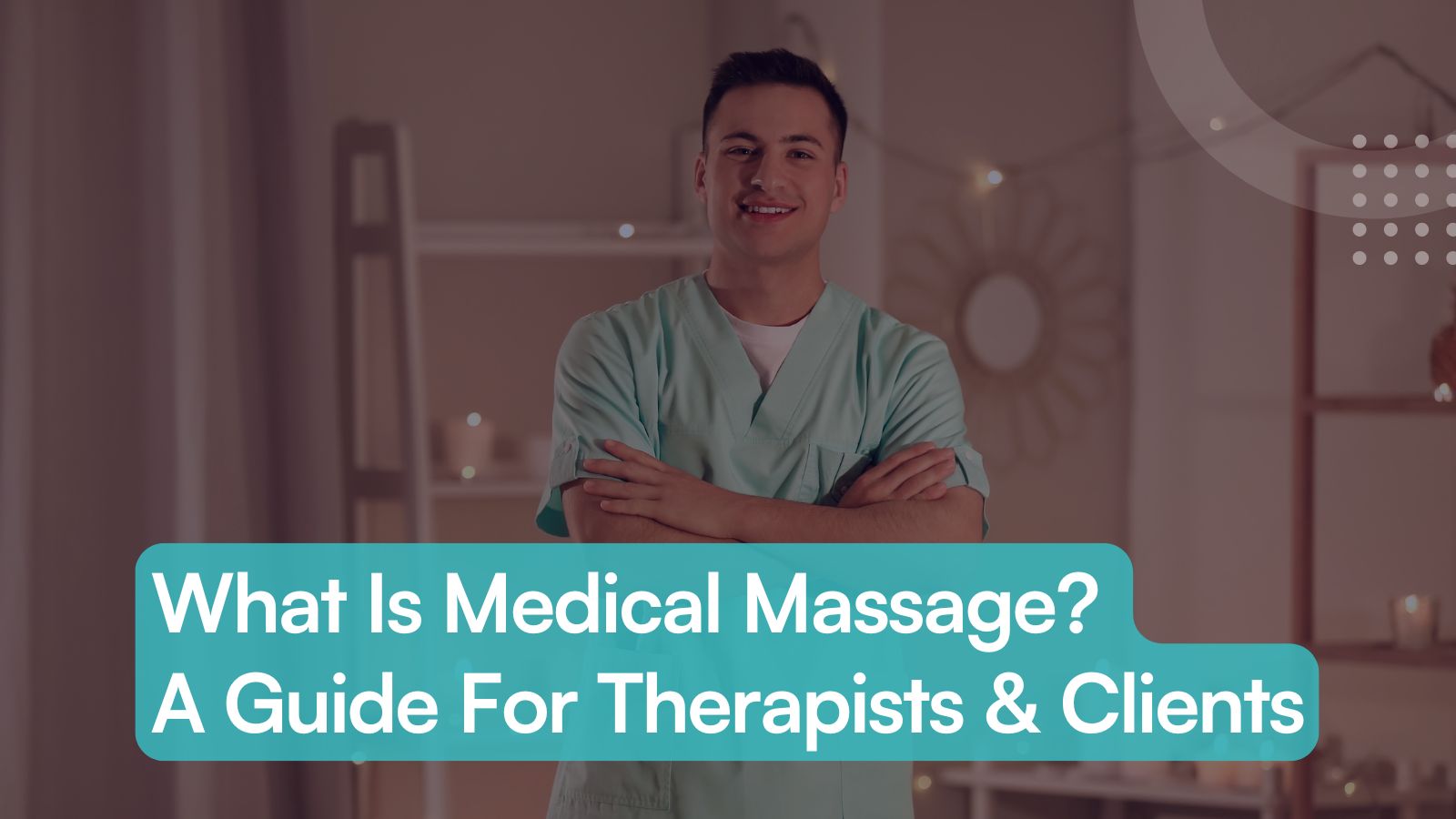
What is medical massage? It’s a question many people ask, and even within the industry, the answer isn’t always clear. The term is often used in different ways, which can make it confusing for both clients and therapists.
In this guide, we’ll clarify what medical massage really means, how it differs from other types of massage therapy, and when it’s used. You’ll also learn about training and certification options, medical massage insurance coverage, and the tools that help therapists provide consistent, high-quality care.
Medical massage is massage therapy that focuses on a specific health concern. It is often prescribed by a doctor or other healthcare provider. It is not a single technique. What makes it “medical” is the treatment plan and the goal of improving a diagnosed condition.
What it is:
What it isn’t:
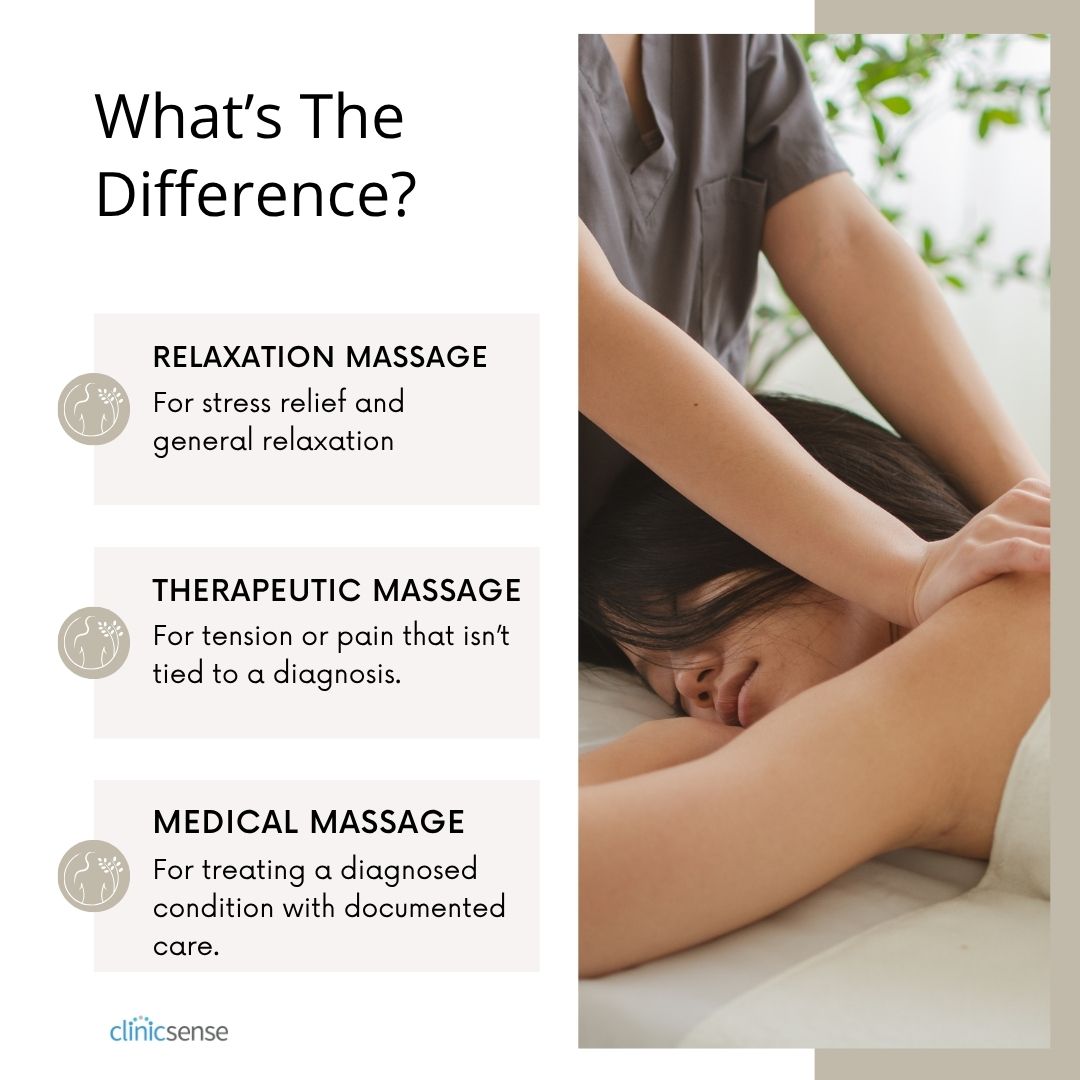
The difference between medical massage and other massage therapy is intention. Medical massage treats a diagnosed condition and requires documentation. Relaxation massage is for stress relief. Therapeutic massage helps with pain or tension that isn’t tied to a diagnosis.
Medical massage is often used to treat pain, injury, or dysfunction caused by a diagnosed condition. The benefits of medical massage include recovery after injury or surgery, reduced chronic pain, and help managing stress-related conditions.
Examples include:
Medical massage helps the body heal after injuries such as sprains, strains, or whiplash. It reduces pain and swelling, improves circulation, and restores normal movement patterns. Sessions are often part of a structured rehabilitation plan.
After surgery, medical massage can reduce stiffness and help prevent scar tissue buildup. Gentle work improves circulation and lymphatic flow, supporting faster recovery and better long-term mobility. It’s often prescribed once healing has reached a safe stage.
Medical massage can ease symptoms of chronic pain conditions like fibromyalgia or degenerative disc disease. It helps reduce muscle tension, improves range of motion, and promotes better movement without aggravating sensitive areas.
Chronic stress affects the whole body. It can lead to muscle tightness, tension headaches, poor sleep, and digestive issues. Medical massage helps calm the nervous system and release built-up tension. It supports relaxation, better sleep, and overall well-being. Research also shows the benefits of medical massage for PTSD, anxiety, and depression.
Repetitive movements and poor posture can cause overuse injuries in muscles and joints. Medical massage helps by reducing inflammation, loosening tight tissue, and restoring proper movement patterns. It’s often used to treat issues like carpal tunnel syndrome, tendonitis, and neck or shoulder pain from desk work.
Before you can practice any type of massage professionally, you need a license. How to get a massage therapy license varies by location. You must always work within the scope of practice for massage therapists, even if you have a medical massage certification.
You don’t need a specific medical massage certification to treat clients with medical conditions, but you do need advanced education. Building skills through massage CEUs helps you work safely and effectively. Many therapists study trigger point therapy, myofascial release, or neuromuscular therapy, which are all popular massage modalities used in clinical settings.
So, should you get a medical massage certification? It’s not required, but it can be a smart investment. Certification shows you’ve met advanced standards and can strengthen your credibility with both clients and healthcare providers. It’s also a great way to deepen your understanding of anatomy, pathology, and treatment planning.
In the U.S., credentials and continuing education are often guided by the National Certification Board for Therapeutic Massage & Bodywork (NCBTMB). In Canada, requirements vary by province. Many therapists pursue registration through their local governing body, such as the College of Massage Therapists of Ontario (CMTO).
Whether you pursue certification or focus on other advanced training, continued education opens doors to sought-after types of massage specialities and helps you deliver safe, effective care.
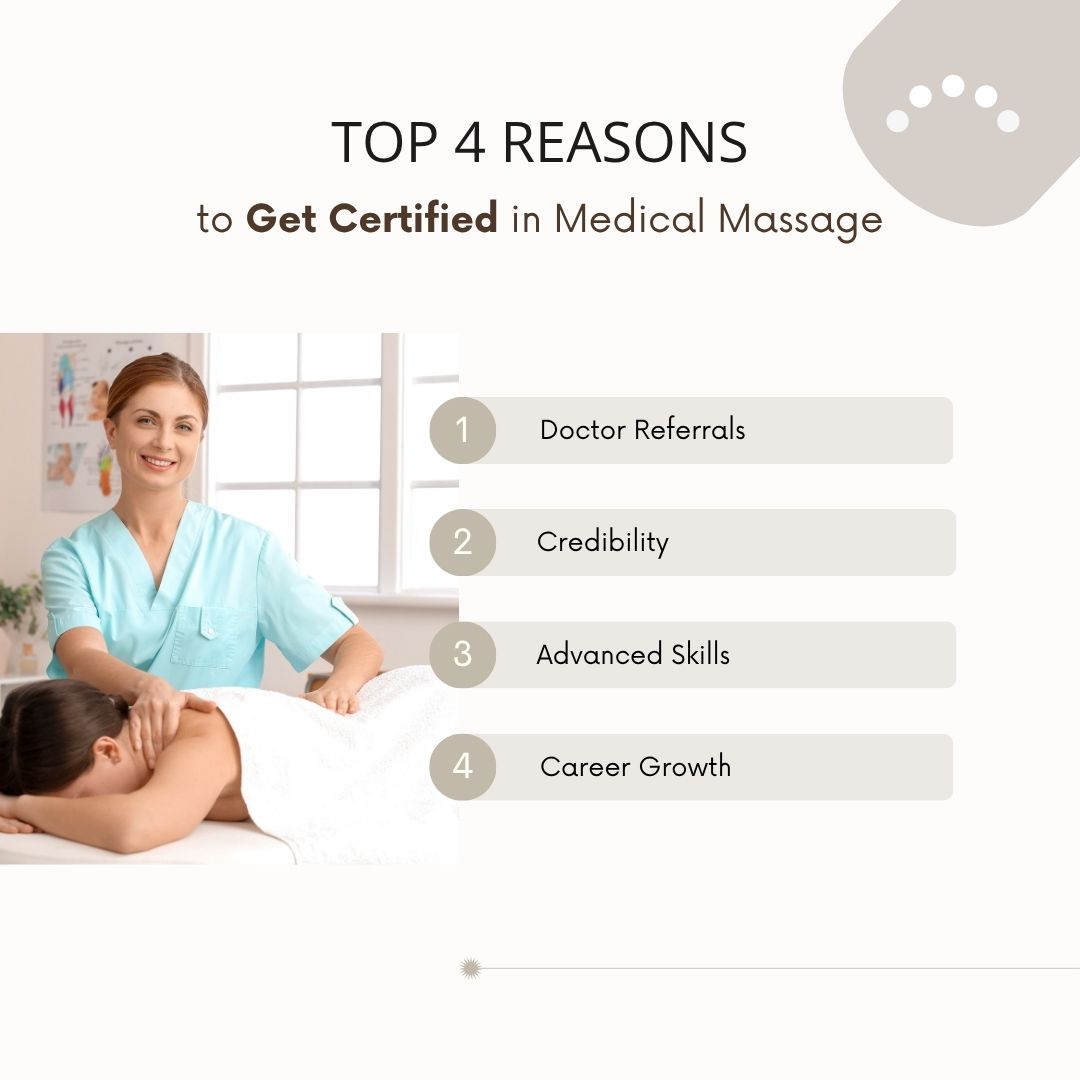
Coverage for medical massage depends on where you live and your insurance plan. In most cases, you’ll need a doctor’s prescription for massage therapy before it’s eligible. Always check with your insurance provider to confirm your medical massage insurance coverage.
If your plan covers massage, some therapists offer direct billing, while others provide receipts for you to submit on your own claim. In the U.S., coverage through private plans is less common, but workers’ compensation and auto insurance often pay for medical massage when prescribed by a physician.
In Canada, massage therapy is more likely to be included in extended health benefits, as long as it’s performed by a registered massage therapist (RMT) and proper documentation is provided. ClinicSense makes direct billing easy with Telus Health eClaims (only available in Canada).
The benefits of medical massage include pain relief, faster recovery, and improved function for clients, along with greater credibility and career growth for therapists. It’s one of the many proven benefits of massage therapy for both health and professional success.
For Clients:
For Therapists:
Running a successful medical massage practice takes more than great hands. You need the right tools to stay organized, document progress, and keep clients informed. These systems help your clinic run smoothly and ensure every patient receives consistent, high-quality care.
Essential tools for medical massage therapists:
Keeping accurate SOAP notes is essential for medical massage therapy. They track client progress, support insurance claims, and show clear treatment outcomes. Organized documentation also builds trust with healthcare providers and helps you stay within your professional scope.
Efficient scheduling keeps your calendar full and your clients consistent with treatment plans. Automated reminders reduce no-shows and help clients stick to their care schedule, improving long-term results.
Handling payments and claims can be time-consuming. Using software that generates insurance receipts and integrates with eClaims streamlines the process. It ensures accuracy and saves hours of admin time, especially for clinics that provide medical massage.
Follow-up messages, progress updates, and newsletters help clients stay engaged. These tools remind clients of the benefits of massage therapy and make getting clients to adhere to massage therapy treatment plans easier. Good communication also supports client retention and referrals.
ClinicSense brings all these tools together, so you can focus on patient care instead of paperwork.
Medical massage is more than a technique; it’s a vital part of modern healthcare. For clients, it offers real results in pain relief, recovery, and overall function. For therapists, it’s a rewarding and credible path within the profession.
If you’re running a clinic or starting your medical massage career, check out how ClinicSense can simplify your admin, so you can focus on what matters most: providing great care.

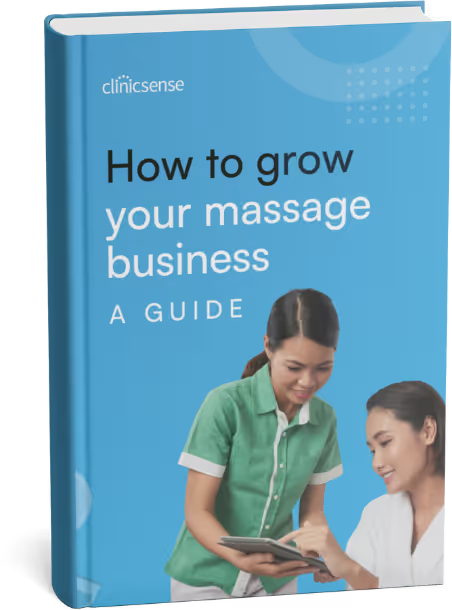
.avif)
.avif)
.avif)
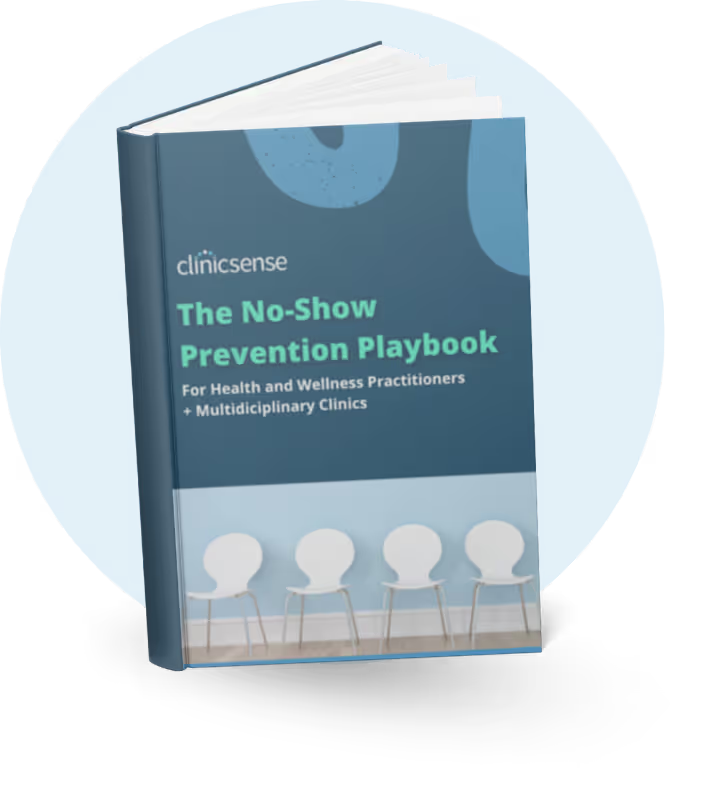

No. Deep tissue is a technique. Medical massage uses any appropriate methods to treat a diagnosed condition and includes documentation and treatment planning.

Not always. A doctor’s prescription can help guide treatment when massage is part of a care plan, but it’s not required to receive medical massage. However, some insurance companies may ask for one if you plan to submit for reimbursement.

Most sessions last 30 to 60 minutes, depending on the condition and treatment goals. Some may be shorter or longer based on the care plan.

Coverage depends on your insurance plan. Some providers cover massage therapy when it’s prescribed by a doctor, while others do not. Always check with your insurance company to understand your benefits. If you’re covered, some clinics offer direct billing, while others require you to submit your own receipts for reimbursement.




For 14 days